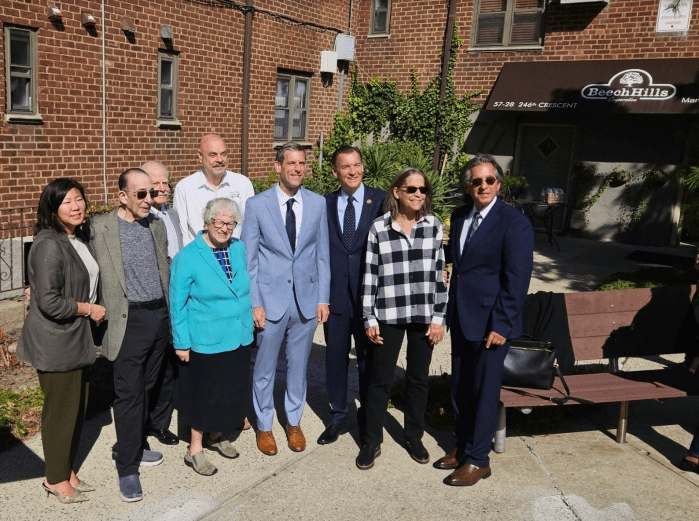BY JESSICA MILITELLO
At New York Martial Arts Academy (NYMAA), a school that teaches Jeet Kune Do, adaptability is part of the foundation of the art. In the midst of a pandemic, it was particularly important for the school to apply the art’s teachings, especially for students to continue their training.
Three of the school’s four locations are in New York City, where indoor gym classes are still not able to meet due to local city regulations of the pandemic. In addition to classes in the park and livestreamed teaching, the school’s instructors got even more creative by investing in a backyard JKD space in their Little Neck location, a nod to the art’s beginning days when Bruce Lee and a select few of his students would spread the art in backyards to small groups.
Jeet Kune Do (JKD) is a martial art that was developed by Lee and intended for self-defense in street applicable scenarios where one needs to adapt to an unpredictable situation with an unknown opponent. His ideas centered on being ever adaptive not only in combat, but through the course of one’s life.
Throughout the 1960s, Bruce Lee opened schools in cities such as Seattle, Oakland and Chinatown, but chose to focus on teaching his students in small groups and private lessons in backyard classes who he trusted his ideas with. After Lee’s death in 1973, his close students, such as Dan Inosanto and Ted Wong, continued spreading the art in backyard classes of their own. One of Inosanto’s students, Chris Kent, would be part of his backyard classes.
Kent, Inosanto and Wong would later become NYMAA’s owners and Dino Orfanos’ instructors and mentors. Orfanos has owned the school since 1985, eventually passing it over to his son, James Orfanos. In the course of using one of JKD’s principles of adaptability, NYMAA has managed to bring the art’s history full circle in a way, by teaching classes outside in one of their school’s own backyards.
The idea was very much a group effort amongst several instructors, and what started as another idea to continue classes in a safe way during the pandemic turned into a bonding experience. The area will be a permanent addition for the location long after the days of mandated masks and social distancing come to an end.
“We knew we would be part of history with the school by contributing to a backyard training area and it’s only going to get better,” said Teddy Holevas, one of the instructors who participated. “We’re just glad we had fun doing it and we all worked together.”
One of the school’s students, Emmanuel Papamichael — who started at the Little Neck location at the age of 4 and has been training for more than 12 years — has had the opportunity to enjoy the backyard classes, possibly even more so since he got to be part of clearing out the backyard and putting it together with his instructors who have watched him grow up with the school.
“Training in the backyard has been great especially when it’s nice out,” said Papamichael. “I’ve been with these guys since I was 4, so it’s been cool to have a part of history, being able to contribute to the backyard and to be training out there.”
So far students have been taking a liking to the new outdoor training floor so much, that there are talks of adding a tent for different weather conditions as well as heaters so the area can still be enjoyed when the weather gets a bit cooler. Speed bags and heavy bags will also be added to the space for classes and for when students want to come to the school during the day to train on their own.
“Little Neck is the only location with an outdoor space, so the shutdown made a little opportunity because if this hadn’t happened, we probably wouldn’t have built it,” said co-owner James Orfanos. “And since that’s how it all started with backyard training, along with being outside, it’s pretty cool.”



































